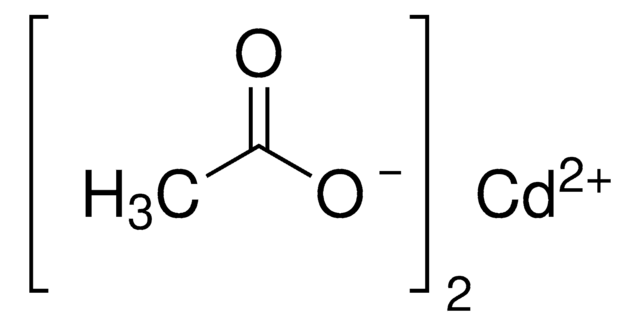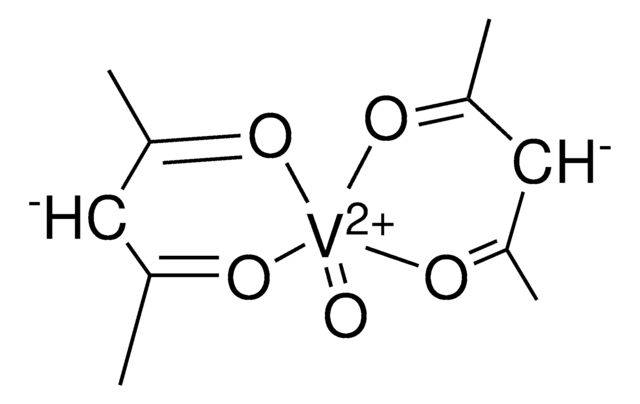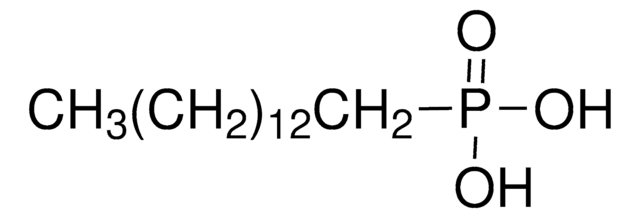755087
Cadmium(II) acetate
anhydrous, 99.995%
Synonym(e):
Cadmium(II) acetate, Acetic acid, cadmium salt, Bis(acetoxy)cadmium, Cadmium acetate, Cadmium diacetate, Cadmium ethanoate
About This Item
Empfohlene Produkte
Qualität
anhydrous
Assay
99.995%
Form
solid
Eignung der Reaktion
core: cadmium
Grünere Alternativprodukt-Eigenschaften
Design for Energy Efficiency
Learn more about the Principles of Green Chemistry.
sustainability
Greener Alternative Product
mp (Schmelzpunkt)
255-273 °C
Grünere Alternativprodukt-Kategorie
SMILES String
CC(=O)O[Cd]OC(C)=O
InChI
1S/2C2H4O2.Cd/c2*1-2(3)4;/h2*1H3,(H,3,4);/q;;+2/p-2
InChIKey
LHQLJMJLROMYRN-UHFFFAOYSA-L
Suchen Sie nach ähnlichen Produkten? Aufrufen Leitfaden zum Produktvergleich
Allgemeine Beschreibung
Anwendung
Signalwort
Danger
Gefahreneinstufungen
Acute Tox. 4 Dermal - Acute Tox. 4 Inhalation - Acute Tox. 4 Oral - Aquatic Acute 1 - Aquatic Chronic 1 - Carc. 1B - Muta. 1B - STOT RE 1 Oral
Zielorgane
Kidney,Bone
Lagerklassenschlüssel
6.1C - Combustible acute toxic Cat.3 / toxic compounds or compounds which causing chronic effects
WGK
WGK 3
Flammpunkt (°F)
Not applicable
Flammpunkt (°C)
Not applicable
Hier finden Sie alle aktuellen Versionen:
Besitzen Sie dieses Produkt bereits?
In der Dokumentenbibliothek finden Sie die Dokumentation zu den Produkten, die Sie kürzlich erworben haben.
Kunden haben sich ebenfalls angesehen
Artikel
Nanostructured Materials Through Ultrasonic Spray Pyrolysis
Nanostructured Materials Through Ultrasonic Spray Pyrolysis
Unser Team von Wissenschaftlern verfügt über Erfahrung in allen Forschungsbereichen einschließlich Life Science, Materialwissenschaften, chemischer Synthese, Chromatographie, Analytik und vielen mehr..
Setzen Sie sich mit dem technischen Dienst in Verbindung.














